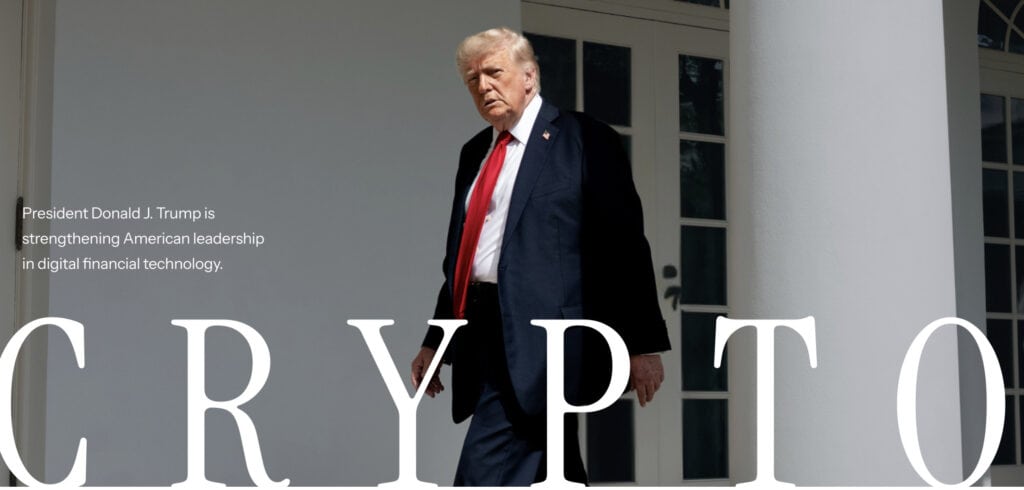White House Drops Crypto Roadmap—But Stays Silent on Bitcoin Treasury Plans
The Biden administration just unveiled its long-awaited cryptocurrency framework—and Wall Street's already yawning.
Where's the Bitcoin beef?
While the 35-page document namechecks blockchain innovation and consumer protections, it's conspicuously quiet about whether Uncle Sam will HODL its seized BTC stash. Treasury's sitting on billions in confiscated Satoshis—enough to make MicroStrategy blush—but the report treats it like a radioactive inheritance.
Regulation theater continues
Same old song about "risks and opportunities," with extra seasoning about stablecoins and illicit finance. The real tell? Zero mention of converting those 200,000+ confiscated Bitcoins into a strategic reserve—guess they'd rather print another trillion dollars than embrace sound money.
Another day, another government document that'll collect dust while crypto markets do what they do best: innovate around bureaucratic paralysis. Some things never change—except your portfolio's ROI if you'd bought BTC instead of trusting these policy timelines.

Key Takeaways:
- The strategy reaffirms ongoing priorities but introduces few new policies.
- There are no new details regarding the proposed Bitcoin or digital asset reserves.
- Federal agencies are encouraged to accelerate crypto oversight using existing regulatory powers.
The report, released Wednesday, serves as a sweeping summary of the Trump administration’s crypto agenda. It includes guidance for regulators, tax recommendations, and commentary on market structure — yet much of the content reflects policy work already underway or previously disclosed.
Senior officials describe the report as a benchmark to measure progress. Compared to the Biden administration’s more cautious approach, Trump’s strategy demonstrates clearer support for digital asset innovation and increased government coordination.
Legislative movement has already begun. The GENIUS Act, which focuses on stablecoin regulation, has become law. Meanwhile, the broader Clarity Act, aimed at establishing a federal framework for crypto markets, has passed the House and is progressing through the Senate.
The Strategic Bitcoin Reserve Remains Undefined
One of the more anticipated aspects of the administration’s crypto policy — the proposal for a Bitcoin Strategic Reserve — receives only a brief mention at the end of the report. The section summarizes the concept without offering any new information or specifics on how such a reserve would be funded, managed, or deployed.
According to officials, infrastructure for the reserve is “underway,” with more details to come. Still, previous comments from WHITE House crypto advisor Bo Hines suggest the administration may not publish a separate public report on the reserve, despite an executive order mandating its evaluation.
The reserve project initially sparked interest across the industry, although early indications suggested it WOULD rely solely on assets seized by federal agencies — a limited and unpredictable funding source. There are also indications that the administration may explore additional funding mechanisms, pending potential legislative support.
Senator Cynthia Lummis has introduced the bitcoin Act, which seeks to formalize the reserve process and reinforce the U.S. role in digital asset innovation. However, the bill has yet to advance in Congress.
A Regulatory Call to Action
The report outlines recommendations for regulatory agencies, urging immediate action using existing authorities. Specifically, it encourages the Securities and Exchange Commission (SEC) and the Commodity Futures Trading Commission (CFTC) to facilitate digital asset trading at the federal level, even as broader legislative frameworks are still being finalized.
SEC Chairman Paul Atkins reiterated the agency’s commitment to leveraging its current powers to establish clarity. “The SEC will continue to play a key role in developing a federal framework and implementing any new legislation crafted by Congress,” he said in a statement.
While the SEC appears poised to act, the CFTC is still awaiting a permanent chair under the TRUMP administration, potentially slowing its regulatory response.

Read the full report here
Tax Reform on the Agenda
The report also proposes tax changes intended to reduce complexity and improve compliance. These ideas echo recent legislative efforts by Senator Lummis, including proposals to exempt low-value transactions from capital gains tax and revise the treatment of staking rewards.
If adopted, these reforms could lower barriers for everyday crypto users and bring greater clarity to digital asset taxation.
The Industry Response
Industry leaders generally welcomed the report as a positive signal. Ji Kim, CEO of the Crypto Council for Innovation, noted that the strategy covers “critical areas such as decentralization, market structure, tax, and global competitiveness,” and called it a “constructive path forward” for digital asset policy.
While the Trump administration’s crypto report offers the most comprehensive view yet of its digital asset policy framework, it stops short of introducing groundbreaking new policies. The absence of fresh detail on the Bitcoin reserve initiative leaves a key question unanswered — though it’s clear the administration sees digital assets as a priority in shaping the future of American finance.
For now, the crypto sector will continue to watch closely — particularly as Congress advances legislation and regulatory agencies begin to interpret and act on the administration’s directives.

